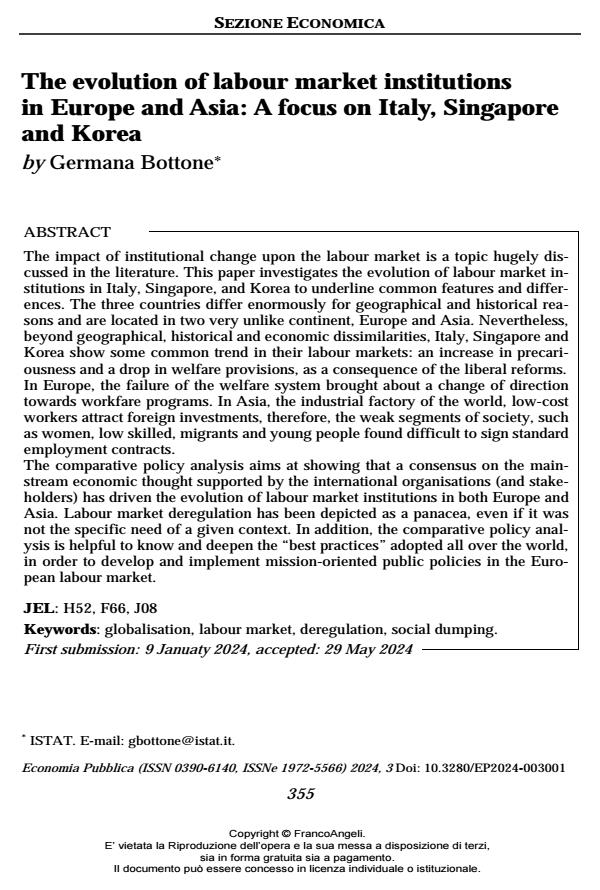The evolution of labour market institutions in Europe and Asia: A focus on Italy, Singapore and Korea
Journal title ECONOMIA PUBBLICA
Author/s Germana Bottone
Publishing Year 2024 Issue 2024/3
Language English Pages 21 P. 355-375 File size 220 KB
DOI 10.3280/EP2024-003001
DOI is like a bar code for intellectual property: to have more infomation
click here
Below, you can see the article first page
If you want to buy this article in PDF format, you can do it, following the instructions to buy download credits

FrancoAngeli is member of Publishers International Linking Association, Inc (PILA), a not-for-profit association which run the CrossRef service enabling links to and from online scholarly content.
The impact of institutional change upon the labour market is a topic hugely discussed in the literature. This paper investigates the evolution of labour market institutions in Italy, Singapore, and Korea to underline common features and differences. The three countries differ enormously for geographical and historical reasons and are located in two very unlike continent, Europe and Asia. Nevertheless, beyond geographical, historical and economic dissimilarities, Italy, Singapore and Korea show some common trend in their labour markets: an increase in precariousness and a drop in welfare provisions, as a consequence of the liberal reforms. In Europe, the failure of the welfare system brought about a change of direction towards workfare programs. In Asia, the industrial factory of the world, low-cost workers attract foreign investments, therefore, the weak segments of society, such as women, low skilled, migrants and young people found difficult to sign standard employment contracts. The comparative policy analysis aims at showing that a consensus on the mainstream economic thought supported by the international organisations (and stakeholders) has driven the evolution of labour market institutions in both Europe and Asia. Labour market deregulation has been depicted as a panacea, even if it was not the specific need of a given context. In addition, the comparative policy analysis is helpful to know and deepen the “best practices” adopted all over the world, in order to develop and implement mission-oriented public policies in the European labour market.
Keywords: globalisation, labour market, deregulation, social dumping.
Jel codes: H52, F66, J08
Germana Bottone, The evolution of labour market institutions in Europe and Asia: A focus on Italy, Singapore and Korea in "ECONOMIA PUBBLICA " 3/2024, pp 355-375, DOI: 10.3280/EP2024-003001